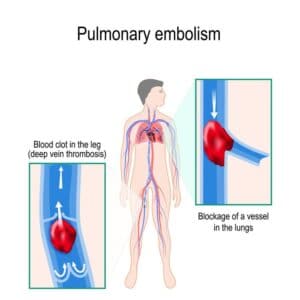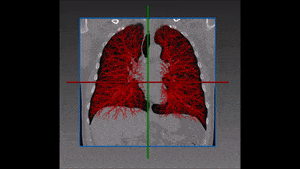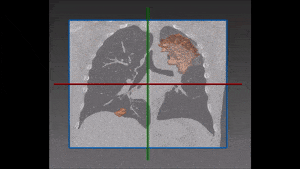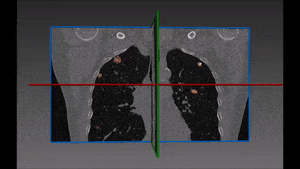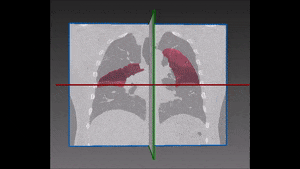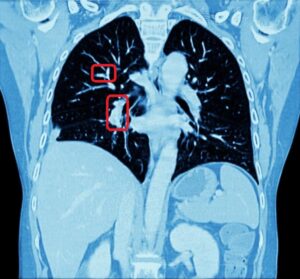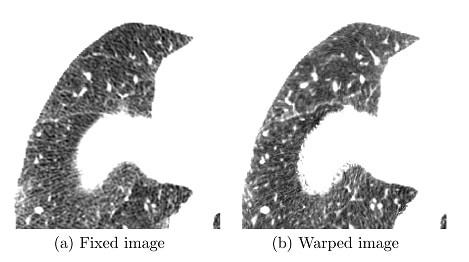
Chest CT registration software
Computed tomography (CT) of the chest provides an effective and non-invasive way to study pulmonary morphology and functioning. Accurate registration of thoracic CT is in fact extremely useful to assess the clinical situation of the patient and give him or her appropriate and timely treatment. On the other hand, thoracic CT registration is also extraordinarily challenging due to the elastic nature of lung tissue deformations. Different CT lung images of the same patient suffer from local deformation, mainly due to the processes of inspiration and expiration. It is therefore necessary to stabilize the images through a transformation mapping between the different configurations of the lung, which will enable calculation of local deformation and data comparison within and (when needed) across patients.
Registration of chest from CT images
For this chest CT registration, we recommend a two-step approach which starts with an affine transformation: this is a linear mapping method that preserves points, straight lines, and planes. Its purpose in our methodology is to suggest an initial alignment, optimized in regard to translation, rotation, scaling and shearing. This alignment will be used in the following step, consisting in a deformable diffeomorphic transformation, a very valuable method for registering images collected from the same individual at different times or by different modalities such as MRI and CT. In particular, we have found this method very useful to assess pulmonary kinematics from lung CT images.
Deformation fields are evaluated in four categories: lung boundaries, fissure alignments, labeled landmarks and singularities in the deformation. Measurement data show that most lung boundaries and fissures were correctly aligned with errors close to zero. Nearly no deformation singularities were found owing to the properties of diffeomorphic transformation models.
This fully automatic method of thoracic CT registration proves itself significantly effective, independently from the source of the CT scans and regardless of the health status of the patient they were taken from. Also, its results are reliable for scans taken at any phase of the breathing cycle. Running times of each procedure of the chest CT registration are still relatively long, suggesting that future work should require finding more sophisticated ways of computation for the numerous iterations which this method necessitates.
* Source: American Lung Association

 Pulmonology
Pulmonology